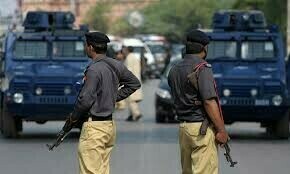ONE of the main issues likely to be discussed during the Bangladesh Prime Minister’s impending visit to India is the sharing of the Teesta river water. The issue has repeatedly featured in previous talks, but without any concrete results. This time, can one expect any forward movement?
The Teesta, after originating in Sikkim and passing through West Bengal, enters Bangladesh before it merges into the Brahmaputra at Teestamukh. The river basin has a drainage area of about 12,000 square kilometres, of which 83 per cent lies in India. The shortage of irrigation water during the dry season in a year (November-April) is a common feature in this region.
The Teesta barrage, constructed by India about 90 kilometres upstream of the Indo-Bangladesh border at Gajaldoba, lies in West Bengal, while Daoni/Dalia barrage constructed by Bangladesh downstream lies about 15 km away from the international border. Both barrages are meant for irrigation purposes.
Bangladesh’s appeal to share 50pc of the Teesta water dates back to 1972. An ad hoc sharing agreement was reached in July 1983, whereby it was decided to allocate 36pc of the water to Bangladesh, 39pc to India, with the remaining 25pc un-allocated.
The West Bengal government has been insisting that the state is unable to share more than 25pc of the water available at Gajaldoba with Bangladesh. It claims that beyond this volume, the upstream areas of the state would be adversely affected.
In 2011, a proposal on interim sharing of water for 15 years was mooted and a process was initiated. This included the arrangement that the lean period flows would be measured jointly at Gajaldoba in West Bengal, at Doani/Dalia in Bangladesh, and at Kaunia in Bangladesh, and that upon collection of the jointly collated data, the 90pc dependable flows would be worked out. And this would form the basis for a long-term agreement.
Further, it was stipulated that 450 cusecs of water would be reserved for environmental flow and the Indian side could utilise 450 cusecs upstream of Gajaldoba barrage for minor irrigation, drinking, industrial purposes etc.
India would release the remaining water from Gajaldoba in such a way that 50pc at Gajaldoba barrage would be available at Doani/Dalia barrage as well. This would effectively mean that the West Bengal government would have to release only 25pc of the water available at Gajaldoba barrage, which when added to the 25pc of the regenerated water between Gajaldoba and Dalia would result in receiving life’s essential equivalent to 50pc of water available at Gajaldoba.
The proposition was not acceptable to West Bengal, as it claimed that the manner of release of water was very vague. It argued that there could be years when regeneration between Gajaldoba and Dalia would be less than 25pc. In such an eventuality, committing 50pc share of water at Gajaldoba might affect the state’s important Teesta barrage project, indeed the largest irrigation project in the eastern region, involving an irrigation potential of 0.9 million hectares and 67.5 MW hydropower.
Because of the difference in perceptions, no agreement was reached during the 2011 and 2015 visits of the Indian prime minister to Bangladesh. Meanwhile, Dhaka has been raising the issue of inadequate availability of the Teesta’s flow in Bangladesh because the water is yet to be released by India.
At the core of the dispute is the proposition that there exists an institutional mechanism to look into the flow of “water data” at critical points. In this case, the technical wing of the Indo-Bangaladesh Joint River Commission (JRC) does the same at Gajaldoba barrage and Dalia barrage, and exchanges the data among the parties.
Since there are different agencies which collect the flow data, these do not often match. There is need for a common protocol for data collection by designated agencies. And the facts and figures must be acceptable to both parties.
Bangladesh being a lower riparian country is hugely dependent on external sources of water — to the extent of 90pc. A fair share of this volume comes from India. Bangladesh also faces the problem of ground-water depletion as well as contamination, as does India. Being a single hydrological unit, surface water and ground water have a symbiotic relationship.
Rather than concentrate on river water alone, the common objective should consider integrated watershed management, combining both types of water. In addition, basin level water management should be considered, as part of broader cooperation, since the Teesta basin is a sub-basin of the greater Ganga, Brahmaputra and Meghna basins.
The Teesta is a highly emotive issue on both sides of the border. There is need for interaction at the level of experts outside the governments from both countries to demystify the issue, and for the flow-back of suggestions to the respective governments. This unofficial channel of sharing of information is likely to build confidence between the two neighbours.
Geopolitically, Bangladesh is anxious to resolve the Teesta issue before the next general election. It has been pending for the past 40 years. India being a ‘big brother’ in the region wants to resolve the issue, considering its priority of the “Act East Policy and for countering China’s proximity”. It is imperative to bring West Bengal to the drawing board for resolution, and to convince the state government of the mutual benefit of the water sharing arrangement.
At this juncture, the way forward is to convince Bangladesh of the sincerity of India’s intention to seek a mutually beneficial formula, and for this, to resume the sharing of genuine data on sharing. The JRC mechanism must be sincerely utilised. Simultaneously, a national consensus has to be built up within India on the importance of friendship with the neighbour through equitable sharing of water.
—The Statesman/India
Published in Dawn, April 5th, 2017














































